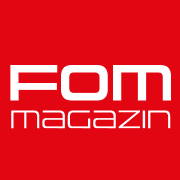Home office employees are often at a disadvantage in terms of representation, participation and access to information. An efficient meeting culture must promote equal opportunities, also for the benefit of team performance.
An Editorial of the FOM Magazine
With the COVID pandemic subsiding, employees are now returning to corporate offices from their home offices.
But by no means all!
Employers and employees have definitely come to appreciate the benefits of the home office: remote working saves time and money, enables a better work-life balance and reduces the carbon footprint.
But in the hybrid world of work, home office employees must also ask themselves whether the physical distance from colleagues and superiors is harming their careers. Because in the traditional meeting culture, remote employees are often disadvantaged.
Equal opportunity in hybrid meetings
According to a survey by The Economist, 62 percent of respondents agreed that limited communication opportunities with their supervisors and colleagues would hurt their career prospects.
The inadequate integration of home office employees is not only a problem for individual employees, but can negatively impact the overall performance and team culture of an organization.
Both organizational and technical measures are needed to address these disparities.
At the heart of it are three things:
1. representation equality
Representation describes the ability to be seen and heard in meetings. This usually fails in the first place due to inefficient technology.
For example, remote workers have the disadvantage that they may not be able to see and hear all participants in the room equally.
On the other hand, remote employees appear clearly visible on the screen with their name and their own tile in the common video call software. Employees in the physical meeting room, on the other hand, do not have their own tile and, depending on the meeting size, are not clearly visible to all meeting participants.
2. participation equality
Participation describes the ability to attend meetings and contribute.
For example, it may be more difficult for remote workers to "jump in" to the discussion spontaneously because they are not present in the same room.
Remote workers are also often excluded from ad hoc meetings that happen spontaneously without invitation.
3. information equality
Information equality means that all employees in the organization have the same level of information and the same access to information relevant to their work.
However, information is not only shared in meetings, but often via so-called "hallway talk," i.e., spontaneous conversations in the hallway or in the coffee corner.
Because remote workers are not present for these conversations, they may be missing essential information to make good decisions or contribute in hybrid meetings.
Technology solutions for more equal opportunities
Some of the challenges of a hybrid meeting culture can be solved through technology.
For example, Google is working on an AI feature that adjusts lighting conditions and auto-zoom parameters during video calls so that all meeting participants appear clearly in the picture - whether physically or digitally present.
Specialized hardware can also promote Räpresentationsgleichheit. For example, there are 360-degree video owls that automatically bring the person speaking into the picture.
Participation equality could be promoted through tools such as buttons for requesting to speak or digital voting tools. In addition, all employees should have the same technical options for convening and moderating meetings.
When it comes to information equality, companies should use collaboration tools. Instead of storing information locally, it should be available on shared drives so that the relevant group of people can always view it.
There are now also collaboration platforms such as Monday or Asana that enable transparent teamwork.
Equal opportunities with FOMs
In addition to the purely technical possibilities, it is also important to have the right organizational and technical framework. This is where FOMs come into play.
FOMs give meetings structure and a predefined flow. Each meeting is accompanied by an interactive meeting agenda, with all participants given speaking time by the moderator .
Since each meeting has a clearly defined goal and only the necessary participants are invited, the number of participants and meeting length are reduced to the necessary minimum.
Clear timelines direct the focus of meeting participants to what is important, avoiding irrelevant participation and encouraging relevant participation.
Ad hoc meetings are also massively reduced in an FOM-based meeting culture, as there is usually no need for them. Instead, all information is shared in the meetings created for this purpose. "Floor talk" is a symptom of an inefficient meeting culture and should be irrelevant in well-managed organizations.
FOMs can also improve access to supervisors for all employees, such as through regular feedback meetings for onsite and remote employees.
Finally, for the first time, FOM software gives decision makers a tool to measure representation, participation and information equality. All meeting data, such as the number of participants, meeting duration and frequency, and tool usage are recorded. HR managers can then identify the right levers to improve the company's meeting culture.
In a perfect world, it should make no difference where an employee does his or her work, as long as the result is right. But the world is not perfect! It will take a while before there is complete equality of representation, participation and information in hybrid organizations. FOMs are a step in the right direction.







